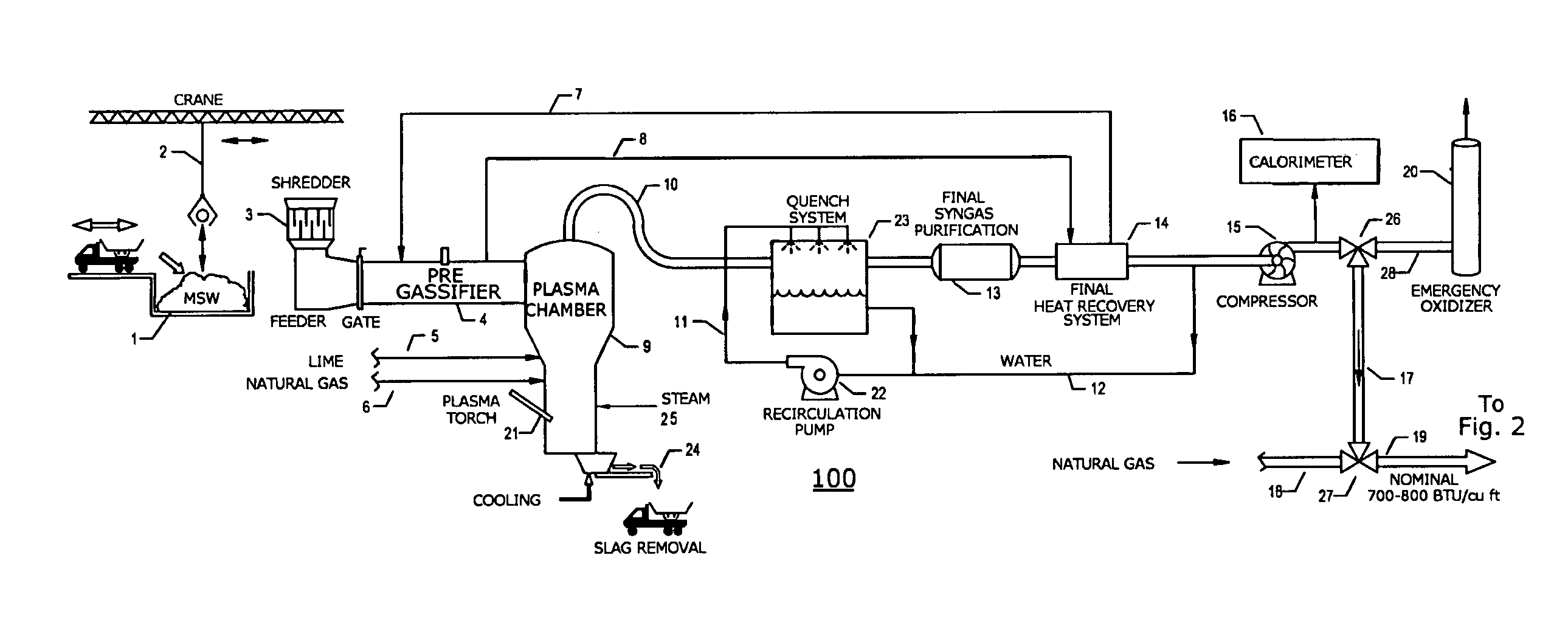Renewable Blended Syngas from a Plasma-Based System
a plasma-based system and blended technology, applied in the direction of combustible gas production, electric generator control, energy input, etc., can solve the problems of low cost of plasma and inductive technology, low economics associated with this technology, and many plasma and other high-tech projects fail, so as to promote plasma-based facilities and promote the acceptance of them. , the effect of low cos
- Summary
- Abstract
- Description
- Claims
- Application Information
AI Technical Summary
Benefits of technology
Problems solved by technology
Method used
Image
Examples
Embodiment Construction
[0039]FIG. 1 is a simplified schematic representation of a process and system 100 for generating blended syngas from an energy source constructed in accordance with the principles of the invention. As shown in this figure, municipal solid waste or other feedstock, designated as MSW 1, is delivered in this specific illustrative embodiment of the invention to system 100 a crane 2. The feedstock can be any organic material, inorganic mix, or fossil fuel. Crane 2 transfers MSW 1 to a shredder 3. The shredded feedstock (not shown) is then delivered to a pre-gassifier chamber 4. It is to be understood that any other form of gassifier can be employed in the practice of the invention. In this embodiment pre-gassifier 4 has been integrated to reduce the work that otherwise would be done by plasma torch 21.
[0040]The feed system, which includes shredder 3, compresses the incoming feedstock MSW 1 so as to minimize the introduction of air. Plasma chamber 9, or other conventional gassifier is, in...
PUM
| Property | Measurement | Unit |
|---|---|---|
| energy | aaaaa | aaaaa |
| thermal content | aaaaa | aaaaa |
| thermal energy | aaaaa | aaaaa |
Abstract
Description
Claims
Application Information
 Login to View More
Login to View More - R&D
- Intellectual Property
- Life Sciences
- Materials
- Tech Scout
- Unparalleled Data Quality
- Higher Quality Content
- 60% Fewer Hallucinations
Browse by: Latest US Patents, China's latest patents, Technical Efficacy Thesaurus, Application Domain, Technology Topic, Popular Technical Reports.
© 2025 PatSnap. All rights reserved.Legal|Privacy policy|Modern Slavery Act Transparency Statement|Sitemap|About US| Contact US: help@patsnap.com



